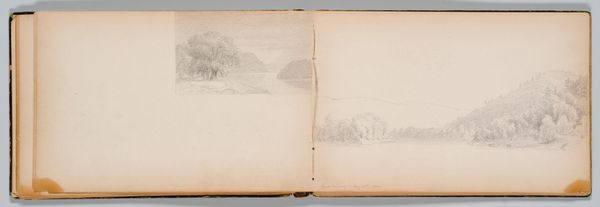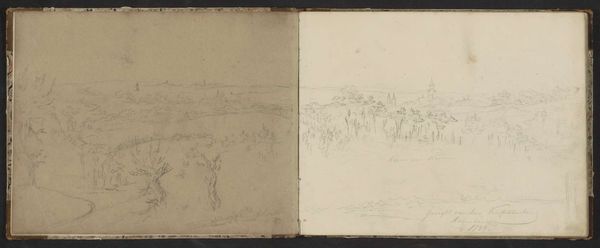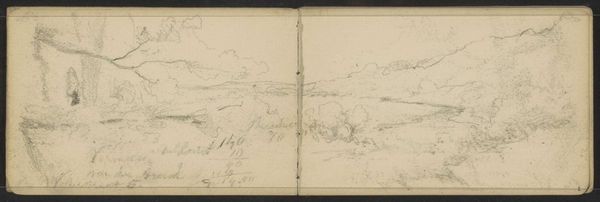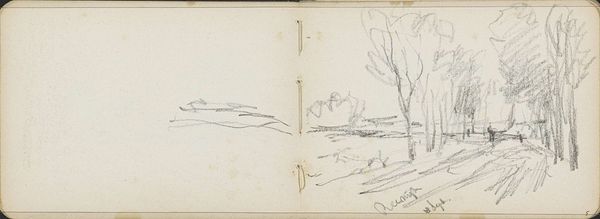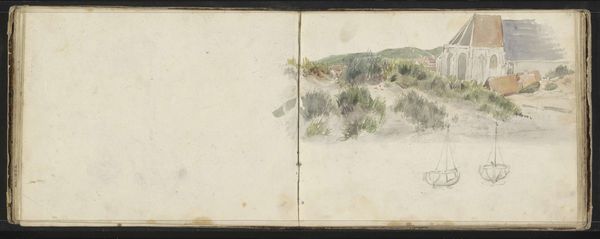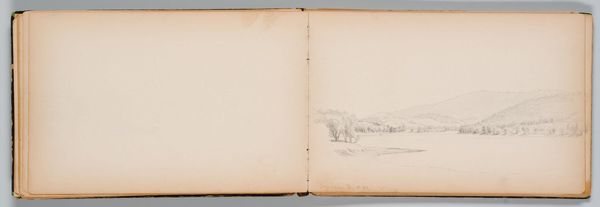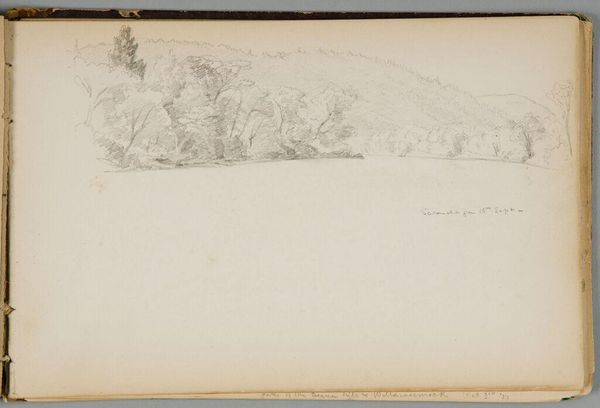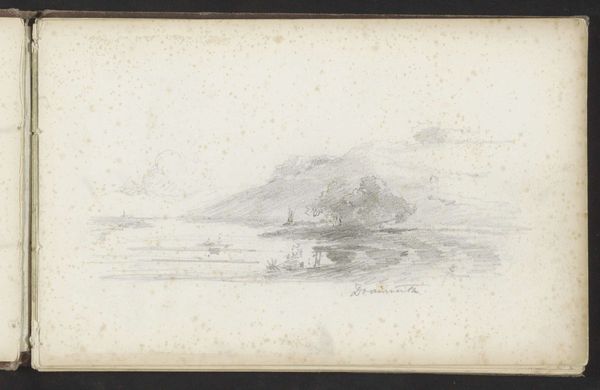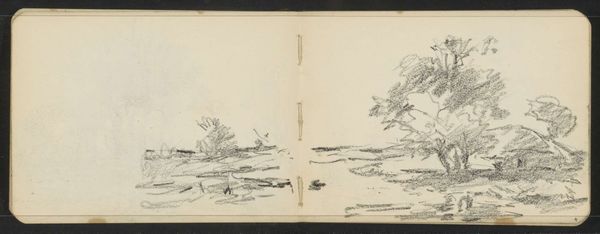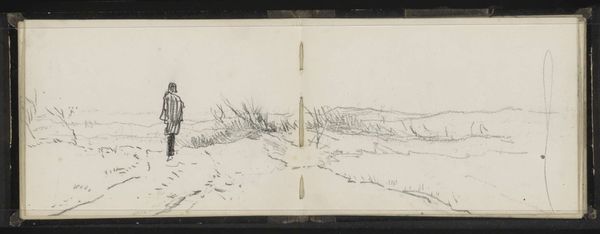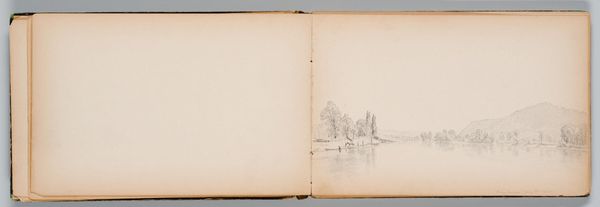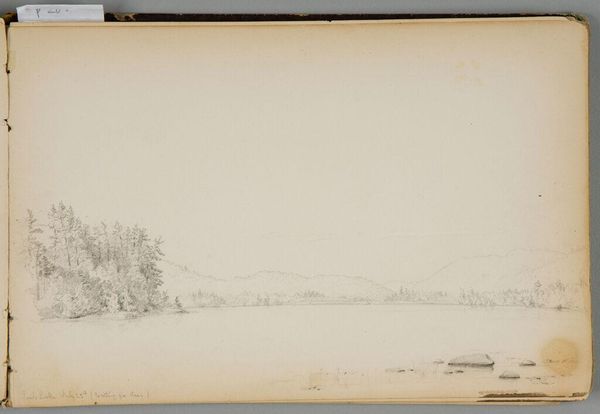
drawing, pencil
#
tree
#
drawing
#
landscape
#
road
#
coloured pencil
#
romanticism
#
pencil
Copyright: Rijks Museum: Open Domain
Curator: So, we're looking at "Gezicht op de Eltenberg" by Johannes Tavenraat, made in 1833. It’s currently held at the Rijksmuseum. Made with pencil, it has that preliminary sketch-like quality, which speaks volumes about artistic processes in the 19th century. Editor: My immediate feeling is wistful, maybe a little melancholic. The subdued tones, the delicate lines – it feels like capturing a memory fading at the edges. I am always curious about the act of witnessing the world. Curator: Well, Tavenraat situates himself within a longer artistic engagement with the romantic landscape, but with a specific socio-political twist. Consider the rise of bourgeois tourism in the Netherlands during this time. Depictions of national landscapes facilitated nation building, and cultural identity formation. Eltenberg's location near the Dutch-German border would carry complex associations. Editor: True, you can read landscapes politically. And there is the symbol of a hilltop lookout as a position of power, a way of claiming space, physically and symbolically. Were similar vantage points historically gendered and/or accessible to particular groups of people in 1833? Curator: It is highly likely, with class being a defining characteristic as well. This would reflect travel culture at the time, especially considering Tavenraat was depicting a well known German mountain area. I feel his choice speaks to a desire for borderless, scenic escape, a feeling he wasn't alone in during his period. Editor: It speaks of longing, even today, regardless of historical setting. Looking at that faint line suggesting a path or road – who walked there, what were their stories? It's an invitation to connect, even now, across all that divides us. And this artwork captures a single moment that carries the legacy and complexities of class, national identity, and cultural norms that extend to contemporary times. It isn’t just a landscape. It's a stage where history, identity, and social hierarchies play out. Curator: Agreed. And by understanding that stage, perhaps we can understand our own role in shaping its future. Editor: Perhaps it is through visual artworks, such as "Gezicht op de Eltenberg," that we may find empathy toward, or solidarity with, one another.
Comments
No comments
Be the first to comment and join the conversation on the ultimate creative platform.
